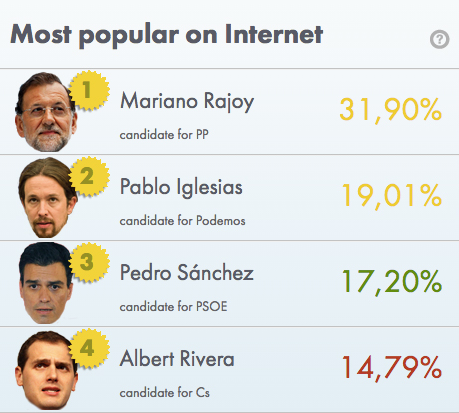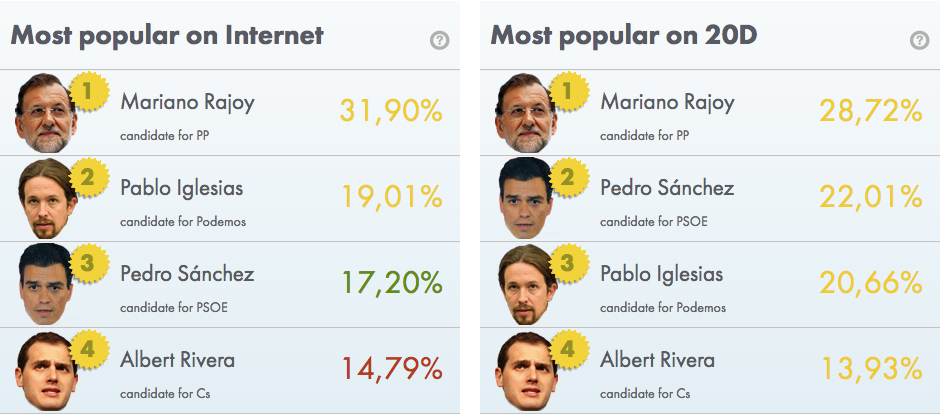¿Can we predict elections results through social media conversation analysis? This is the question Websays has tested with the recent digital conversation monitoring about the political campaign for the recent Spanish elections which results can be viewed here: elections20D.websays.com. Through the analysis of the data provided by the social networks, blogs, forums and digital media, Websays can measure the real influence of the politicians and their political parties on the Internet, distinguishing between the positive and the negative impact of the comments.
From the campaign’s start we have gathered 7.882.055 mentions about the political parties and candidates on Twitter, Facebook, YouTube, Instagram, digital media, blogs and forums.
Is this conversation on the Internet reflecting public opinion? Can we translate social media into the offline world?
Our hypothesis is: yes, we can. For instance no politician is outside the discussions on Twitter, more and more we see everyday how public figures have controversy generated on Twitter.
From the initial results based on Volume, Participants and Sentiment, we’ll try to explain the conversation.
The first indicator is the popularity of each candidate and party, calculated using a very simple formula:
Total Impact – Negative Impact
where
Impact = 1 + retweets + likes + comments + references
and where 1 is the original mention and the references are links to that mention.
If we compare the estimate from Websays and Sibilare with the the CIS polls or even the exit polls surveys, the overall result is that we were closer to the final voting results! Specifically we were closer to the results for PP, Podemos and Ciudadanos; with the exception of PSOE.
We will learn from this experience and adapt our algorithms and metholodogies, like considering the weight of the parties digital strategies and generation of content versus their engagement, which we can easily calculate with Websays technology. So stay tunned for the future projects!

